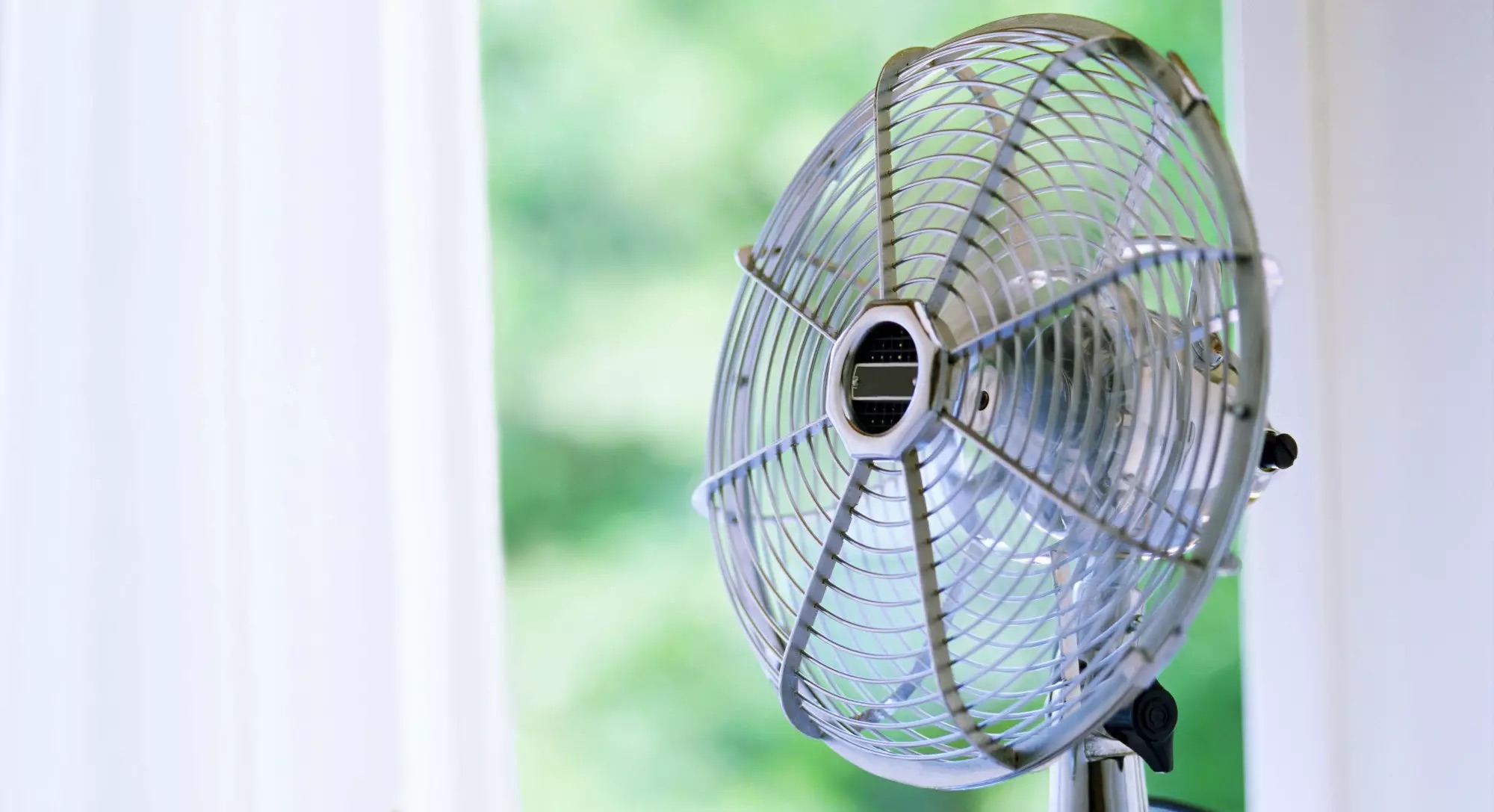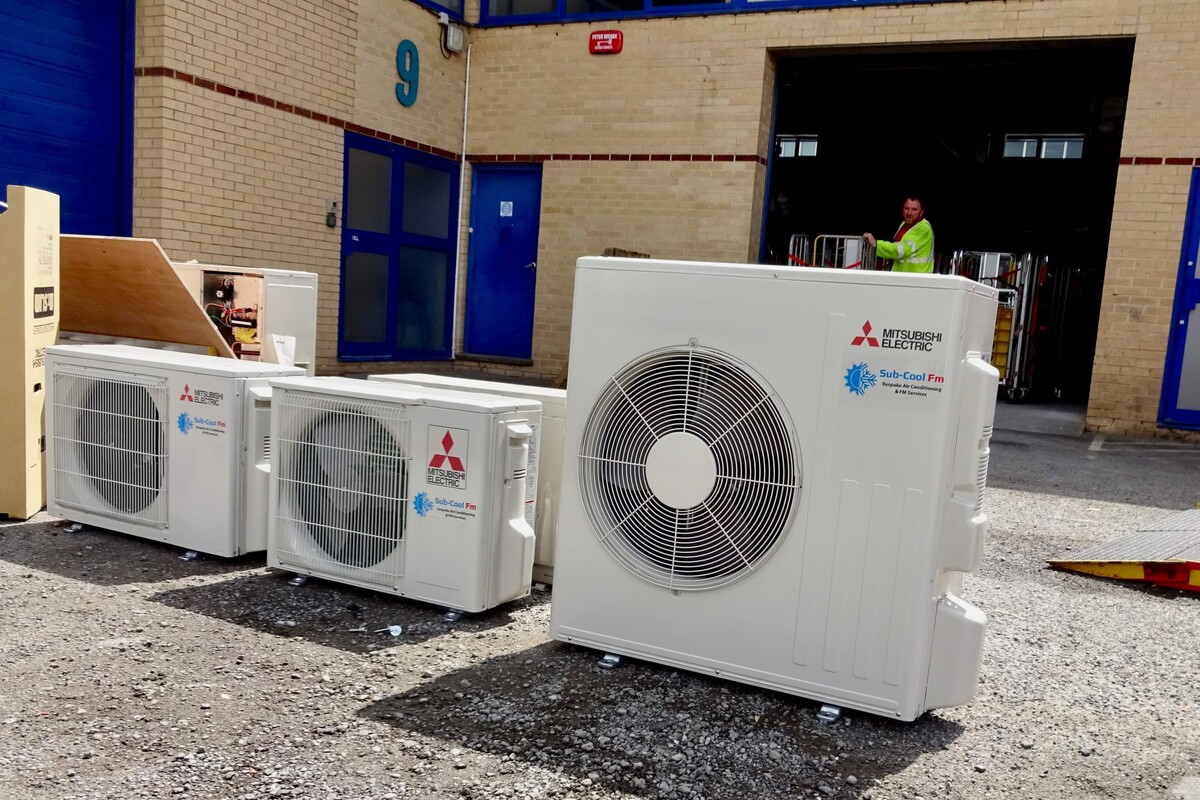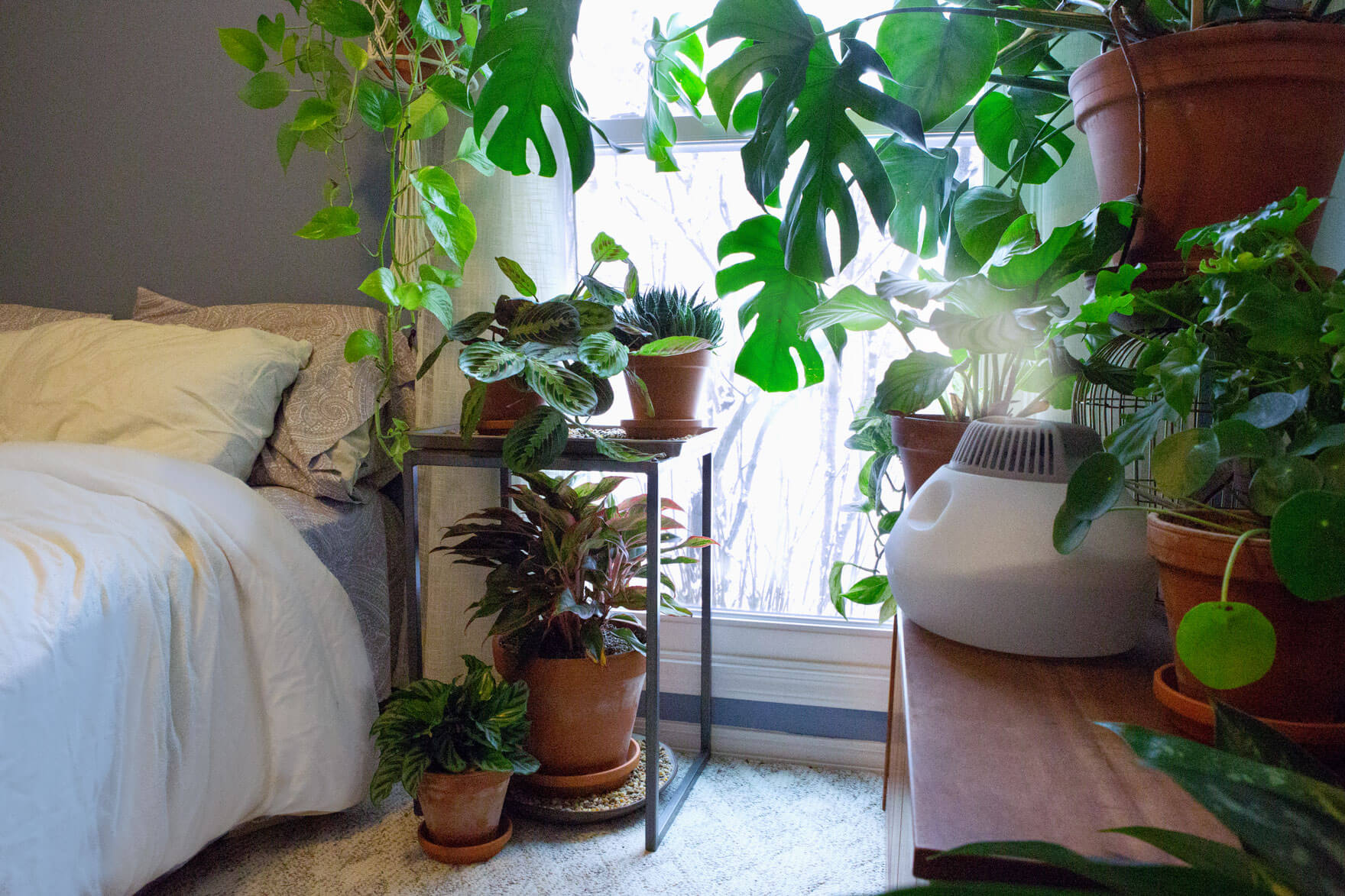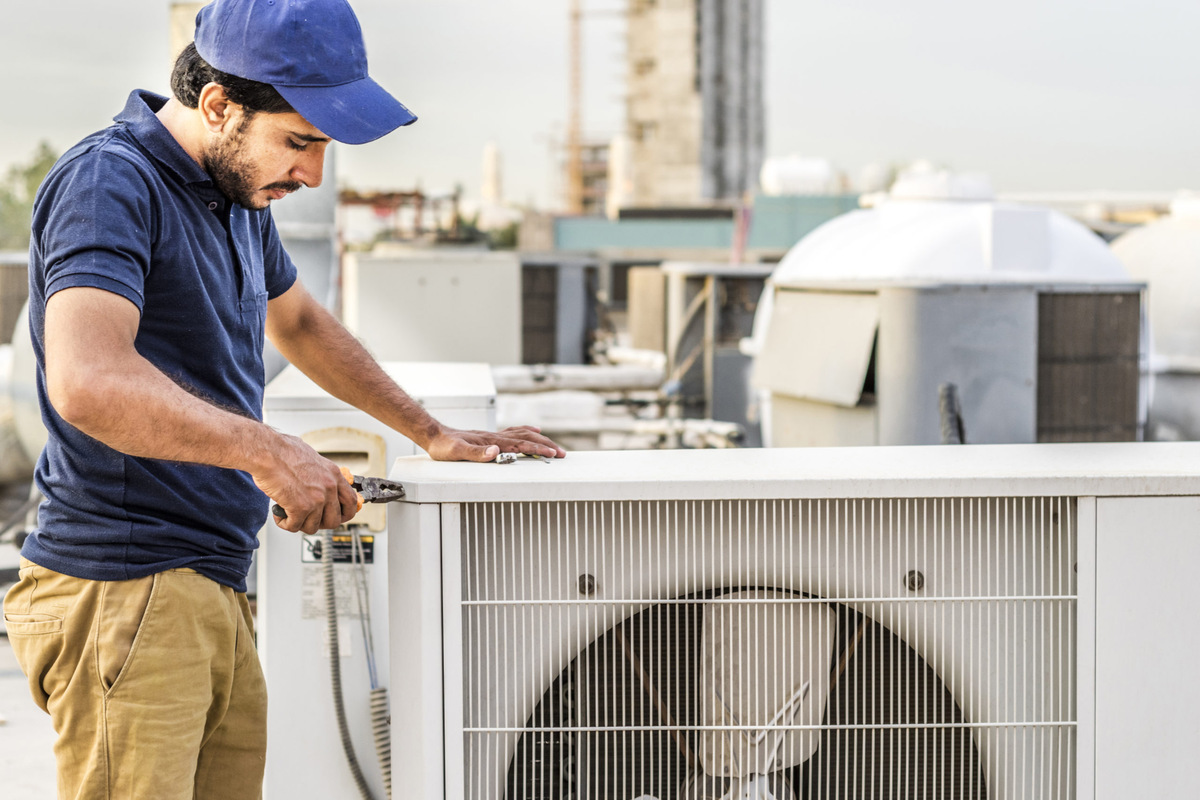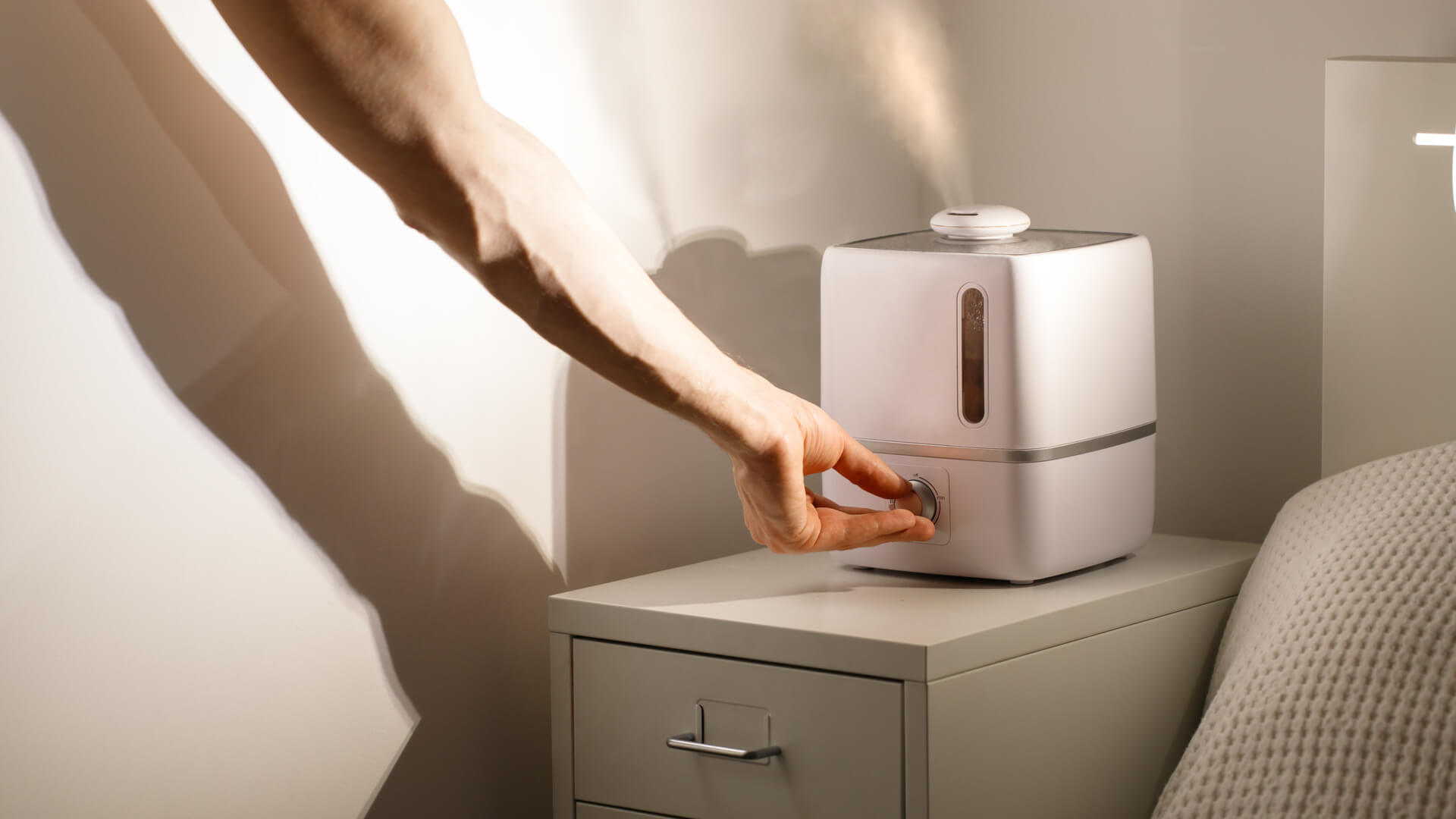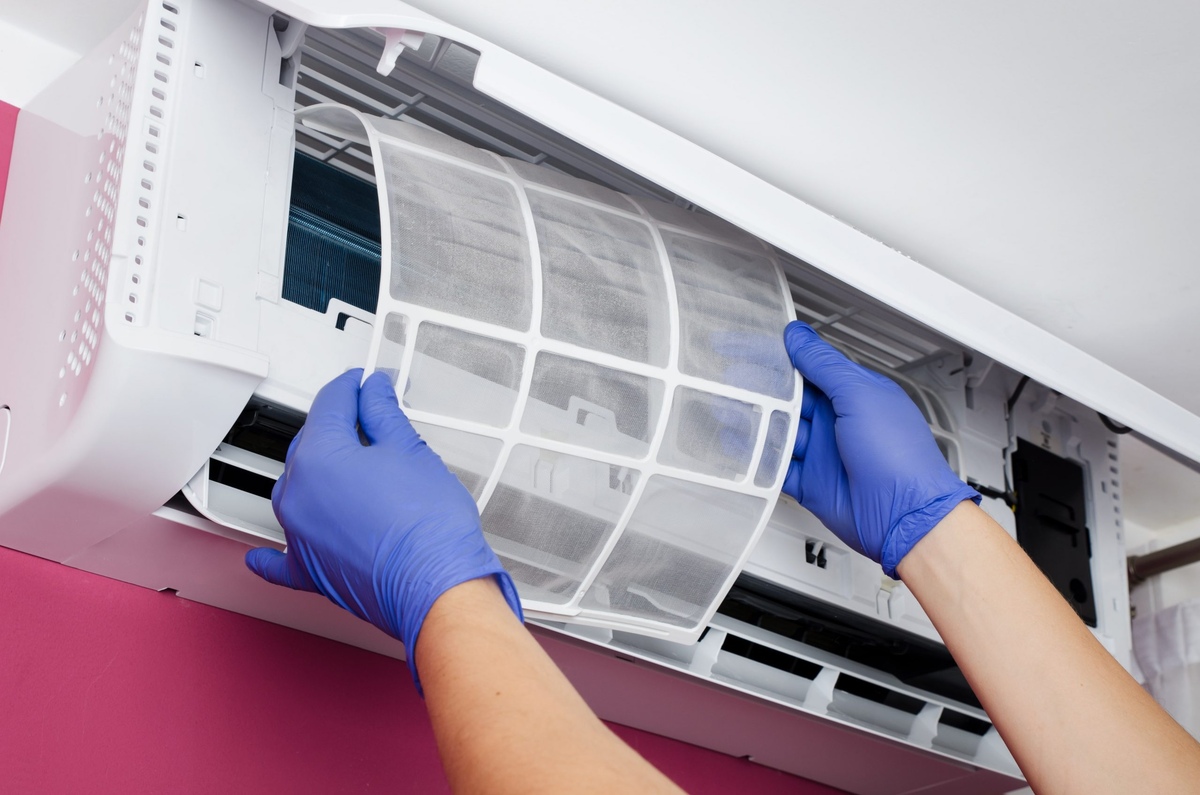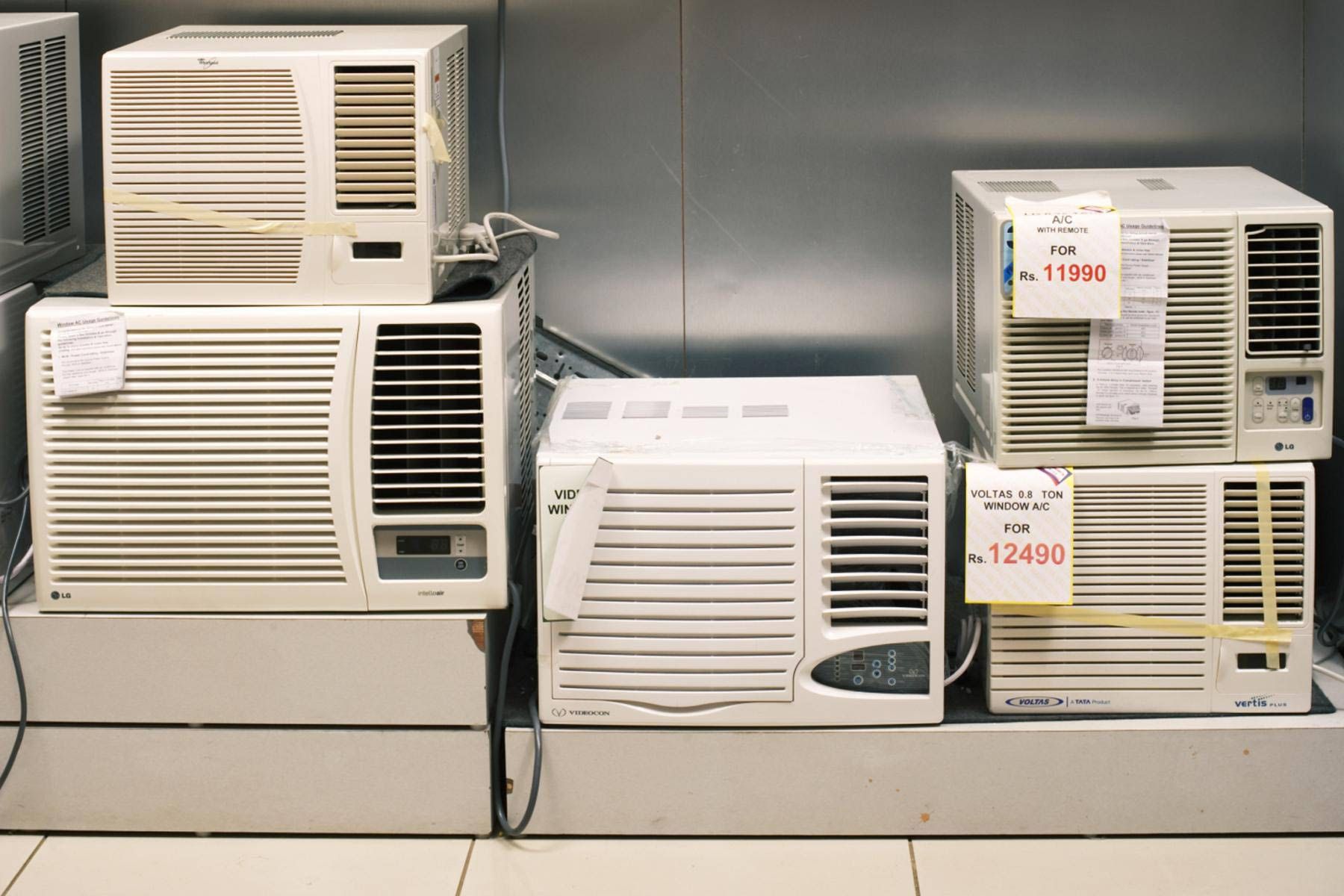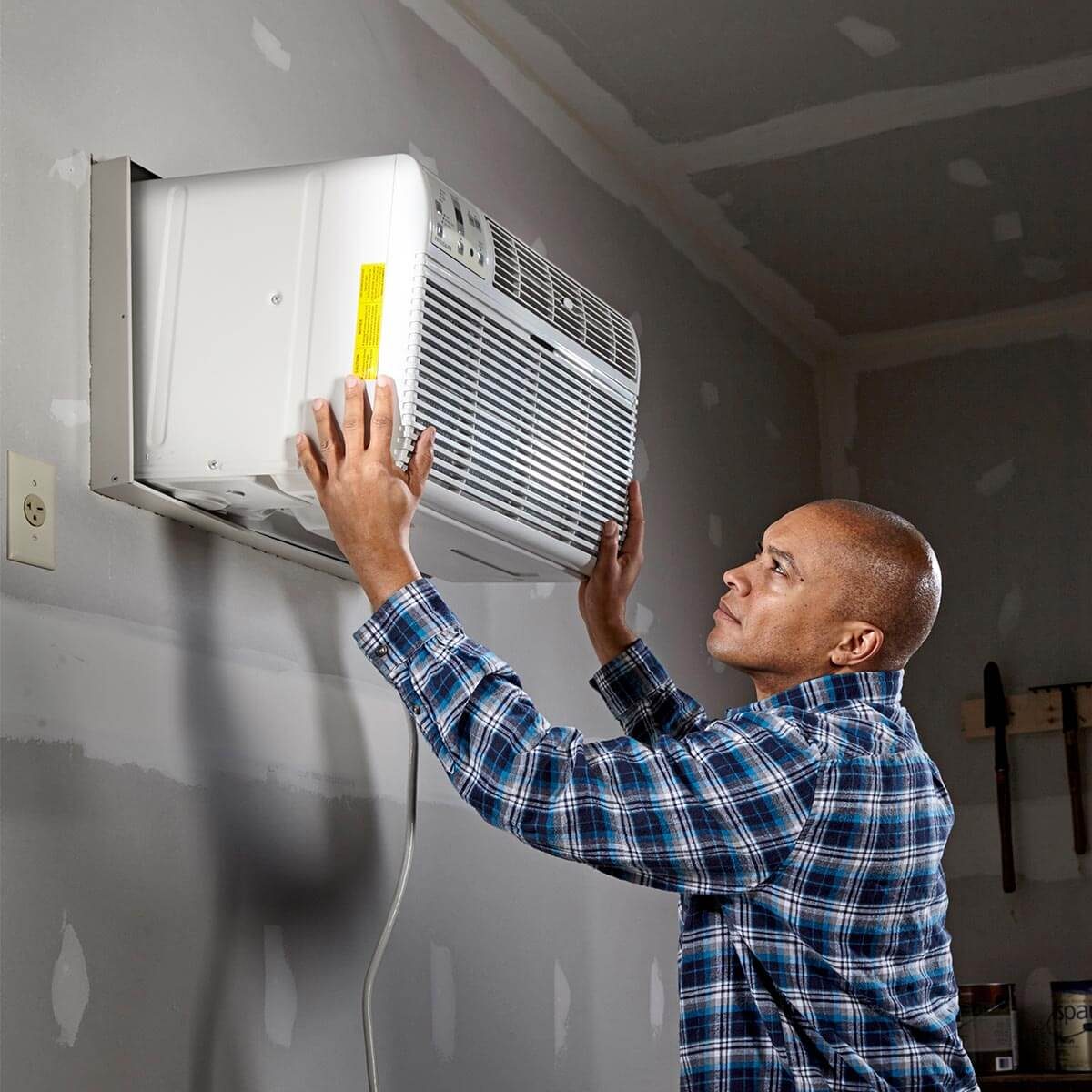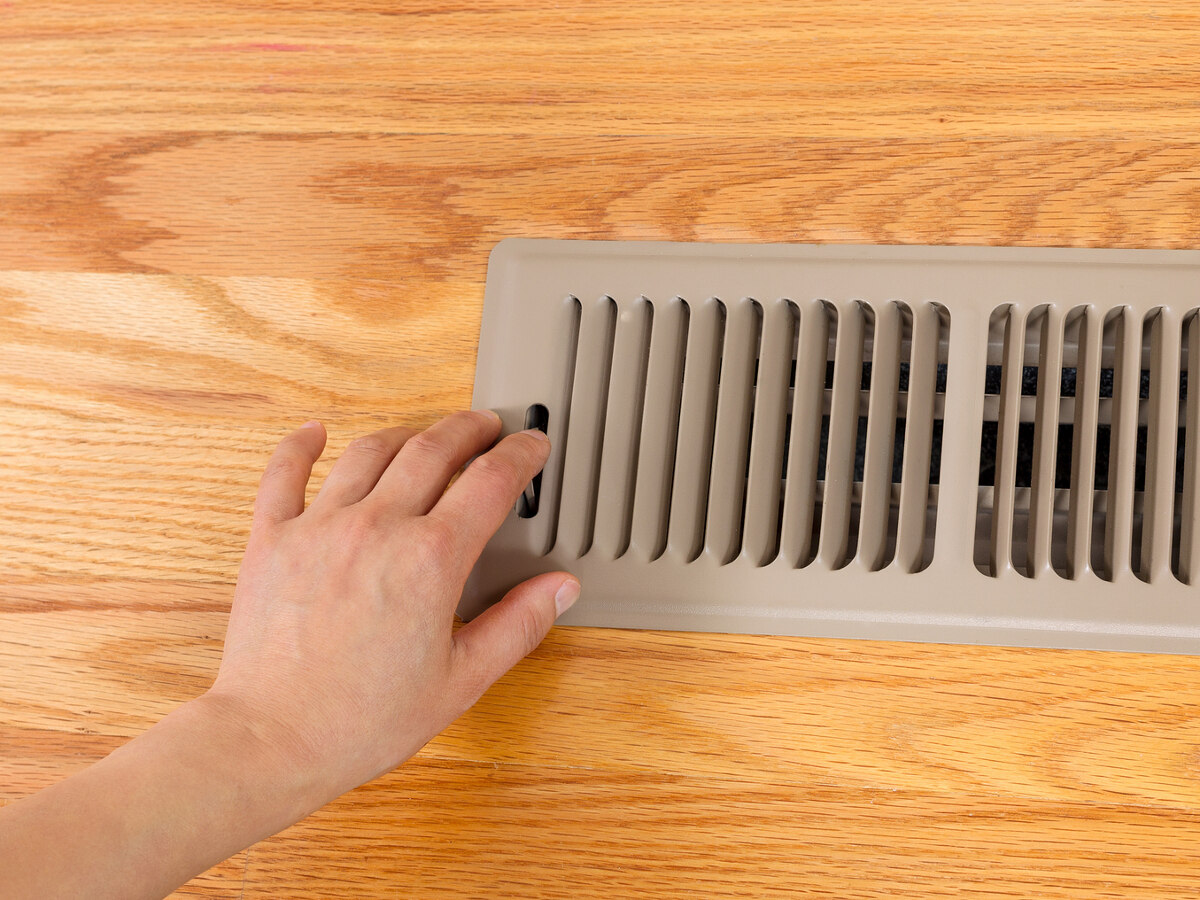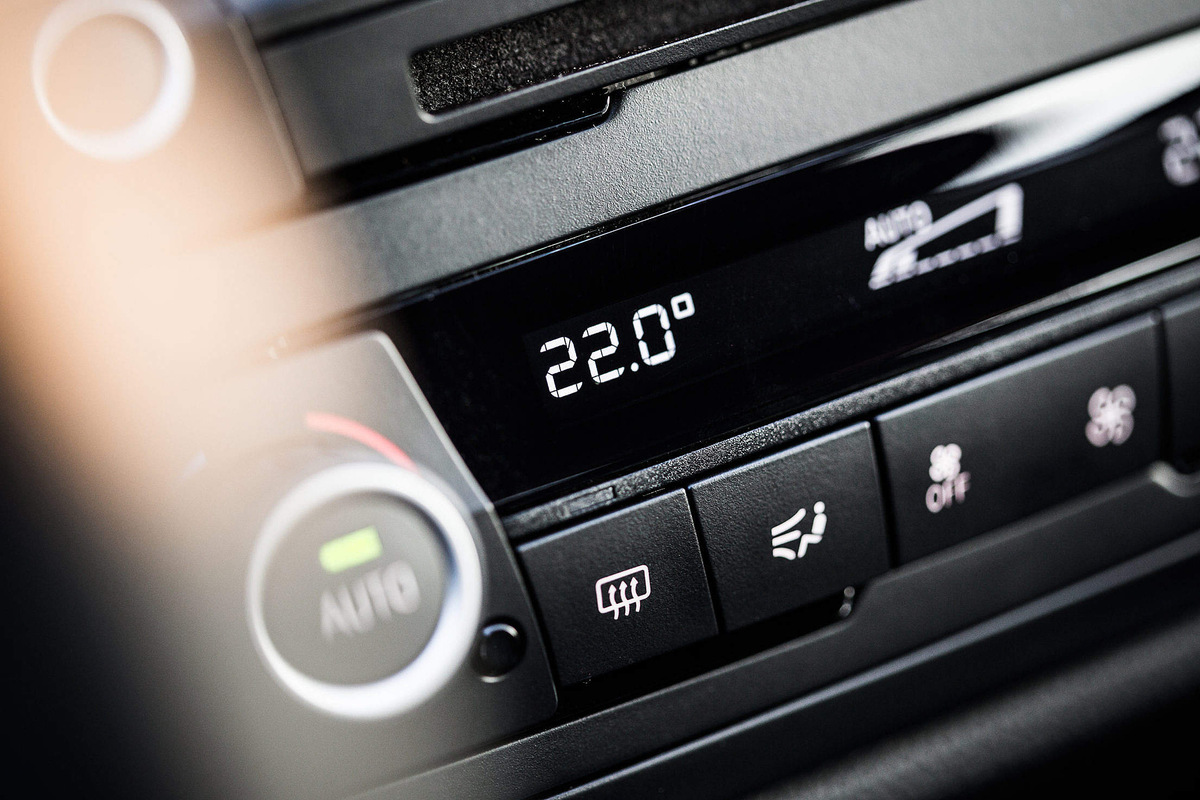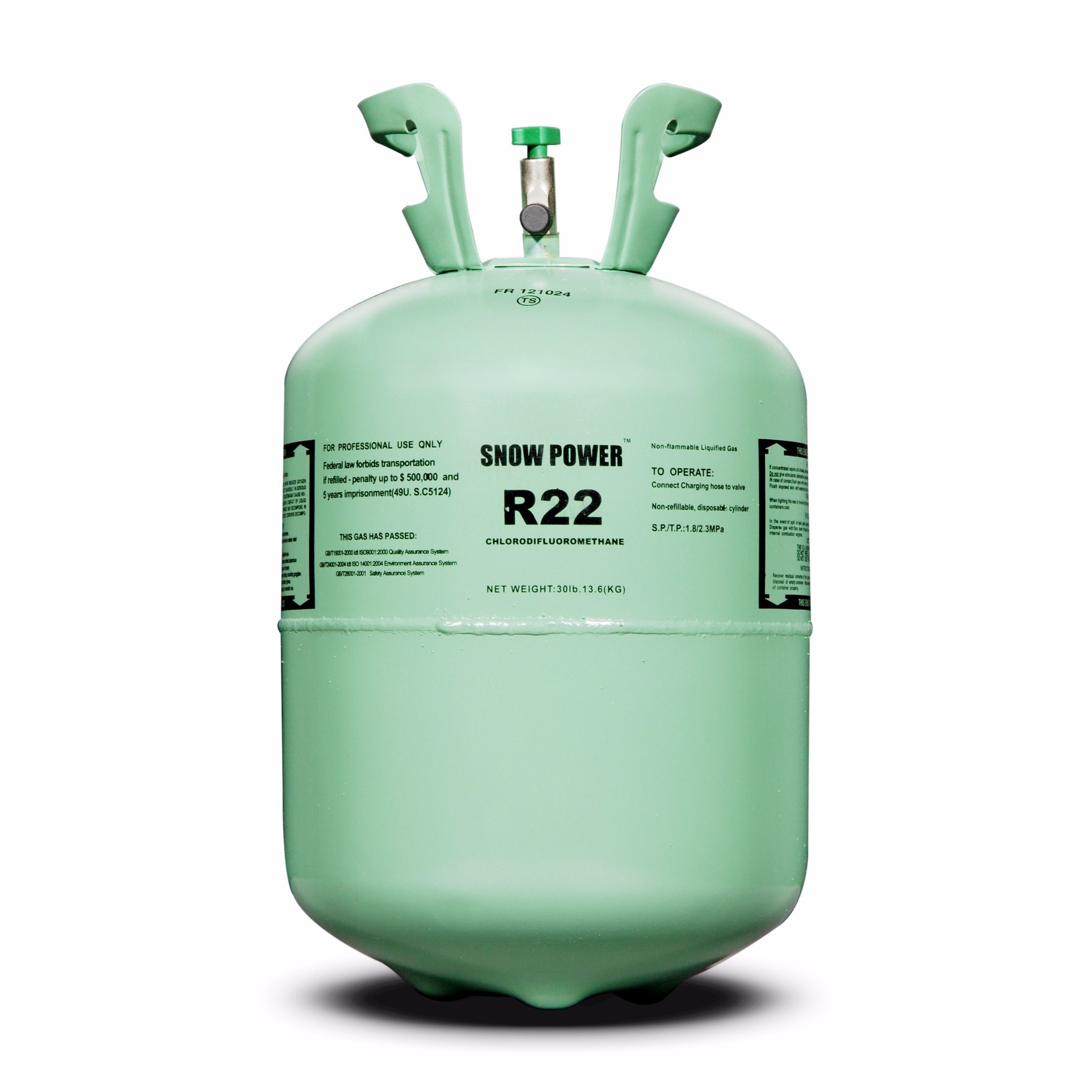Home>Home Maintenance>How To Humidify A Room With Air Conditioning
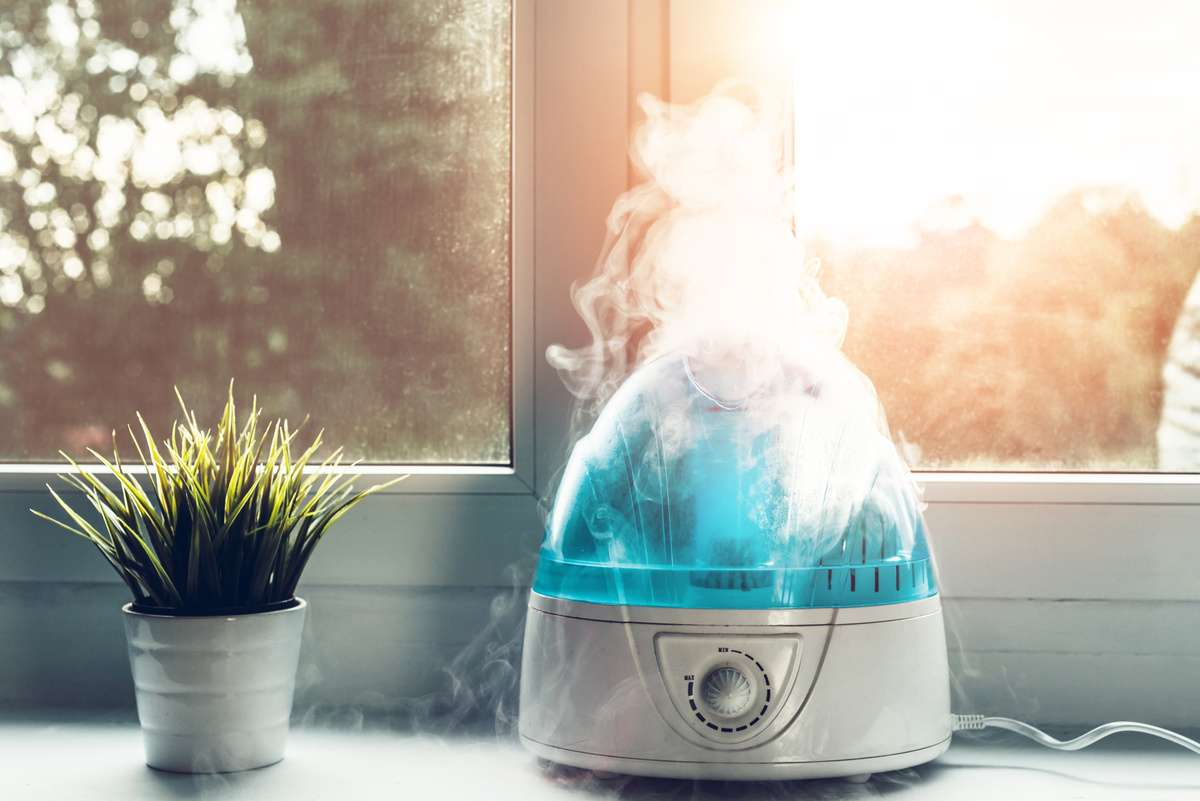

Home Maintenance
How To Humidify A Room With Air Conditioning
Modified: October 20, 2024
Learn how to effectively humidify a room using air conditioning. Improve your home's comfort and optimize air quality with these maintenance tips.
(Many of the links in this article redirect to a specific reviewed product. Your purchase of these products through affiliate links helps to generate commission for Storables.com, at no extra cost. Learn more)
Introduction
Creating a comfortable living environment in our homes is essential for our overall well-being. One factor that significantly contributes to our comfort is the humidity level in the rooms. Humidity refers to the amount of moisture present in the air, and it plays a crucial role in maintaining a healthy and enjoyable indoor atmosphere.
When the air in our rooms becomes too dry, it can lead to a range of issues such as dry skin, irritated nasal passages, and even respiratory problems. On the other hand, excessive humidity can promote the growth of mold, mildew, and other allergens, which can cause various health issues.
While many people rely on air conditioning to cool their homes during the hot summer months, they may not be aware that air conditioning can also be used to effectively humidify a room. This multi-functional approach not only provides comfort but also helps maintain optimal humidity levels throughout the year.
In this article, we will explore the various methods and techniques you can use to humidify a room with air conditioning. Whether you have a central air conditioning system or a standalone unit, we will guide you through the process of achieving the ideal humidity levels for a more comfortable living space.
Key Takeaways:
- Keep your room comfortable by maintaining humidity levels between 40% and 60%. Use a hygrometer to monitor and adjust humidity, and clean and maintain your humidifier for optimal performance.
- Use your air conditioning unit to effectively humidify your room by setting it to fan mode and combining it with a well-placed humidifier. Balance humidity levels and follow manufacturer’s instructions for best results.
Read more: How To Insulate A Room For Air Conditioning
Understanding the Importance of Humidity in a Room
Before diving into the process of humidifying a room with air conditioning, it is important to understand why humidity is crucial for our overall well-being. Maintaining the right humidity level in our living spaces has numerous benefits for both our health and the durability of our belongings.
First and foremost, humidity affects our respiratory system. When the air is too dry, it can cause discomfort and irritation in our eyes, nose, and throat. Dry air can also worsen existing respiratory conditions such as asthma and allergies. On the other hand, when the air is overly humid, it can make breathing difficult and create a breeding ground for mold, dust mites, and other allergens that can trigger respiratory issues.
Aside from respiratory health, humidity can also impact our skin. When the air lacks moisture, it can lead to dry, itchy skin and even exacerbate skin conditions like eczema. On the contrary, high humidity can cause excessive sweating and leave our skin feeling sticky and uncomfortable.
Furthermore, maintaining the right humidity level in a room is crucial for preserving furniture, wooden floors, and musical instruments. Dry air can cause wood to shrink and crack, while excessively humid conditions can lead to warping and mold growth. The ideal humidity range for most indoor spaces is between 40% and 60%.
Lastly, the right humidity level can even impact our overall comfort and productivity. A room that is too dry can make us feel lethargic and fatigued, while excessive humidity can leave us feeling sticky and uncomfortable. Achieving the optimal humidity level can help create a pleasant and invigorating environment that promotes relaxation and productivity.
Now that we have a better understanding of the importance of humidity in a room, let us move on to the next step: assessing the current humidity level in your space.
Assessing the Current Humidity Level
Before you can effectively humidify a room with air conditioning, it is essential to determine the current humidity level in your space. There are several methods you can use to measure the humidity, ranging from simple DIY techniques to more accurate devices.
One of the simplest ways to gauge the humidity level is through physical observation. Pay attention to any signs of dryness or excessive moisture in the air or on surfaces. If you notice that your skin feels dry and itchy or your wooden furniture appears cracked and brittle, it is likely that the humidity is too low. Conversely, if you see condensation forming on windows or moist spots on walls, it indicates high humidity.
However, to obtain a more accurate reading, you can use a hygrometer. A hygrometer is a device specifically designed to measure humidity. There are various types available, including analog and digital options. Digital hygrometers are generally more accurate and provide real-time humidity readings. Place the hygrometer in the room you wish to assess and allow it some time to acclimate to the environment. Once it stabilizes, you can read the current humidity level displayed on the device.
It is important to note that humidity levels can vary throughout a home. Different rooms may have different levels of humidity depending on factors such as ventilation, sunlight exposure, and proximity to water sources. Therefore, it is recommended to assess the humidity in each room individually to ensure balanced and comfortable conditions throughout your living space.
Once you have determined the current humidity level, you can move on to the next step: choosing the right humidifier for your room.
Choosing the Right Humidifier for Your Room
When it comes to humidifying a room with air conditioning, selecting the right humidifier is crucial. There are several types of humidifiers available on the market, each with its own advantages and considerations.
1. Ultrasonic Humidifiers: These humidifiers use ultrasonic vibrations to create a fine mist that is released into the air. They are quiet, energy-efficient, and suitable for all room sizes. Ultrasonic humidifiers come in both warm and cool mist options, providing flexibility based on personal preference or seasonality.
2. Evaporative Humidifiers: These humidifiers work by using a fan to blow air through a moistened wick or filter, which then evaporates the water into the air. They are affordable, low-maintenance, and ideal for larger rooms. However, they can be noisier compared to other types of humidifiers.
3. Steam Humidifiers: As the name suggests, steam humidifiers produce steam by heating water and releasing it into the air. They are effective in raising humidity levels quickly and are often recommended for respiratory conditions. However, they tend to consume more energy and require careful placement to avoid any accidents or burns.
When selecting a humidifier, consider the size of your room. Ensure that the humidifier has the capacity to efficiently cover the square footage of the space. Additionally, look for features such as adjustable mist settings, built-in humidity sensors, and automatic shut-off functions for convenience and safety.
Another factor to consider is maintenance. Some humidifiers require regular cleaning and filter replacements to prevent the growth of mold and bacteria. Check the manufacturer’s instructions to understand the maintenance requirements and ensure that you are willing to commit to the necessary upkeep.
Lastly, consider the noise level of the humidifier. If you plan to use it in a bedroom or office environment, opt for a model that operates quietly to avoid any disturbance while you sleep or work.
By carefully considering these factors, you can choose the right humidifier that best suits your room size, lifestyle, and preferences.
Now that you have selected the appropriate humidifier, let’s learn how to prepare the room for humidification.
Preparing the Room for Humidification
Before you start the process of humidifying a room with air conditioning, it is important to prepare the space to maximize the effectiveness of the humidifier. By taking a few simple steps, you can create an environment that allows the humidifier to distribute moisture evenly throughout the room.
1. Clean the Room: Begin by tidying up the room and making sure it is free from dust and debris. Remove any clutter and vacuum or sweep the floors. Dust particles can impede the humidifier’s performance and may lead to poor air quality.
2. Check for Leaks or Drafts: Inspect the room for any leaks or drafts that could affect the humidity levels. Seal any gaps around windows, doors, or vents to prevent the escape of moisture or the intrusion of dry air from outside.
3. Close Doors and Windows: Close all doors and windows in the room to create a controlled environment. This helps maintain the humidity levels and prevents moisture from escaping to other areas of the house.
4. Increase Air Circulation: Improve the circulation of air within the room by using fans or ceiling fans. This ensures that the humidified air is evenly distributed throughout the space, minimizing any stagnant areas.
5. Remove Absorbent Materials: Take out any absorbent materials such as towels or rugs that can soak up moisture. These materials can hinder the ability of the humidifier to humidify the room effectively.
6. Consider Humidity-Absorbing Plants: Certain plants have natural humidifying properties and can help maintain moisture levels. Place a few indoor plants, such as peace lilies or areca palms, in the room to enhance the humidifying process.
By following these preparation steps, you create an ideal environment for the humidifier to effectively add moisture to the air. Once the room is ready, you can proceed to the next step: placing the humidifier in the optimal position.
Placing the Humidifier in the Optimal Position
The placement of the humidifier plays a crucial role in maximizing its performance and ensuring even distribution of moisture throughout the room. By positioning the humidifier in the right location, you can effectively humidify the space and create a comfortable living environment. Here are some tips for placing your humidifier in the optimal position:
1. Place it on a Solid, Elevated Surface: Position the humidifier on a sturdy, elevated surface such as a table or nightstand. This helps prevent damage from water spills and allows the mist to disperse more effectively into the room.
2. Keep it Away from Walls and Furniture: Avoid placing the humidifier directly against walls or furniture. This ensures proper airflow and prevents the formation of condensation on surfaces which could lead to mold growth or damage to furniture.
3. Maintain Distance from Electronics: Keep the humidifier at a safe distance from electronics and electrical outlets to prevent any potential water damage. Water and electronics do not mix well, so it’s important to exercise caution when placing the humidifier near electronic devices.
4. Aim for Central Placement: Position the humidifier in the center of the room or near the area where you spend the most time. This helps distribute the moisture evenly throughout the space and ensures that the humidified air reaches all corners of the room.
5. Consider Humidifying Multiple Rooms: If you have a larger home or multiple rooms that require humidification, you may need to invest in multiple humidifiers. Place each humidifier in a central location within each room to achieve optimal moisture balance throughout the entire living space.
6. Adjust the Direction of the Mist: Some humidifiers have adjustable mist nozzles or vents. Experiment with the direction of the mist and ensure it is pointed away from walls, furniture, and electronics. This will help prevent any possible damage and allow the mist to disperse more evenly into the air.
By carefully considering these placement tips, you can ensure that your humidifier effectively distributes moisture into the room and provides optimal humidification. Next, let’s explore how to operate the air conditioning unit for humidification purposes.
To humidify a room with air conditioning, place a bowl of water near the AC unit. As the air circulates, it will pick up moisture from the water and help increase the humidity in the room.
Operating the Air Conditioning Unit for Humidification
While air conditioning is primarily used for cooling, it can also play a valuable role in humidifying a room when used strategically. By understanding how to operate the air conditioning unit, you can effectively increase the humidity levels in your living space. Here’s how:
1. Set the Air Conditioning Unit to Fan Mode: Turn off the cooling mode on your air conditioning unit and switch it to fan mode. This allows the unit to circulate the air without actively cooling it, helping to distribute moisture evenly throughout the room.
2. Adjust the Fan Speed: Set the fan speed to a low or medium setting. Higher fan speeds may cause the air to blow too forcefully, leading to excess evaporation and potential discomfort.
3. Use the Air Conditioning Unit Sparingly: Run the air conditioning unit in fan mode for shorter durations to prevent the room from becoming too cold. The idea is to utilize the unit to circulate the air and disperse the moisture emitted by the humidifier, rather than solely relying on air conditioning for cooling purposes.
4. Combine with Open Windows or Doors: If outdoor humidity levels are higher than those indoors, you can open windows or doors slightly to allow fresh air to enter the room. This allows the air conditioning unit to draw in the humid outdoor air and distribute it throughout the space.
5. Monitor the Temperature and Humidity Levels: Keep an eye on the temperature and humidity levels in the room. The ideal temperature range for comfort and humidity regulation is typically between 68-72°F (20-22°C). Additionally, monitor the humidity levels using a hygrometer and make adjustments as needed to maintain a comfortable and healthy environment.
Remember, the air conditioning unit can assist in humidification, but it is essential to also utilize a humidifier to effectively add moisture to the air. The combination of a humidifier and the air conditioning unit in fan mode ensures efficient distribution of humidified air throughout the room.
Next, let’s explore how to monitor the humidity level to ensure optimal comfort.
Monitoring the Humidity Level
Monitoring the humidity level in your room is essential to ensure that it remains within the ideal range for comfort and health. By regularly assessing the humidity, you can make necessary adjustments to maintain an optimal living environment. Here are some guidelines for monitoring the humidity level:
1. Use a Hygrometer: Invest in a reliable hygrometer to accurately measure the humidity level in your room. Place the hygrometer in a central location away from walls, direct sunlight, and potential sources of moisture, such as the humidifier or air conditioning unit. Check the hygrometer regularly to keep track of any fluctuations in humidity.
2. Ideal Humidity Range: The ideal humidity range for most indoor spaces is between 40% and 60%. This range provides a comfortable level of moisture without promoting the growth of mold or mildew. Adjust the humidifier or air conditioning unit accordingly to maintain the desired humidity level in your room.
3. Seasonal Considerations: Remember that humidity levels can vary with the seasons. Cold winter months often have drier air, requiring more humidification. Conversely, hot and humid summer months may require less humidification or have higher humidity levels naturally. Adjust the humidifier and air conditioning unit settings accordingly to accommodate seasonal changes in humidity.
4. Health and Comfort Factors: Pay attention to how your body feels in relation to the humidity level. Dry, itchy skin, chapped lips, and difficulty breathing can indicate low humidity, while excessive sweating and a damp feeling may suggest high humidity. Adjust the humidity level as needed to maintain comfort and promote good health.
5. Calibration and Maintenance: Periodically calibrate your hygrometer to ensure accurate readings. Follow the manufacturer’s instructions for calibration or consider replacing the hygrometer altogether if it consistently shows discrepancies. Additionally, maintain your humidifier and air conditioning unit properly to avoid any issues that could affect humidity measurements.
Monitoring the humidity level and making necessary adjustments helps create a pleasant and healthy living environment. Regularly check your hygrometer and take action to maintain the optimal humidity range for your comfort.
Next, let’s explore the importance of cleaning and maintaining the humidifier to ensure its efficiency and longevity.
Cleaning and Maintaining the Humidifier
Proper cleaning and maintenance of your humidifier are essential for its efficient operation and longevity. Regular maintenance helps prevent the buildup of mold, bacteria, and mineral deposits, ensuring that the humidifier continues to provide clean and healthy moisture. Follow these steps to clean and maintain your humidifier:
1. Read the Manufacturer’s Instructions: Start by familiarizing yourself with the manufacturer’s instructions for cleaning and maintenance. Different types of humidifiers may have specific cleaning and maintenance requirements, so it is important to follow the guidelines provided.
2. Regular Cleaning: Clean your humidifier at least once a week, or more frequently if recommended by the manufacturer. Begin by unplugging the unit and emptying any remaining water. Disassemble the humidifier according to the instructions, removing and cleaning all removable components such as the water tank, mist nozzle, and filters (if applicable).
3. Cleaning Solution: Prepare a cleaning solution using a mixture of water and vinegar or bleach. Alternatively, you can use a commercially available humidifier cleaning solution. Fill the water tank with the solution and let it sit for 15-20 minutes to loosen any mineral deposits or residue.
4. Scrub and Rinse: Use a soft-bristle brush to scrub the tank, nozzle, and other components, removing any built-up deposits or residue. Rinse all components thoroughly with clean water to remove any cleaning solution or debris.
5. Clean the Base: Wipe down and clean the base of the humidifier with a damp cloth. This helps remove any dust or dirt that may have accumulated on the surface.
6. Check and Replace Filters: If your humidifier has a filter, inspect it regularly for any signs of mold, mildew, or clogging. Follow the manufacturer’s recommendations for filter replacement, or clean and reinstall the filter according to the provided instructions.
7. Empty and Dry: After cleaning, empty any remaining water from the tank and base of the humidifier. Allow all components to air dry completely before reassembling the unit. This helps prevent the growth of mold or bacteria in damp areas.
8. Regular Maintenance: In addition to weekly cleaning, perform regular maintenance tasks such as descaling to remove mineral or calcium deposits. Follow the manufacturer’s instructions for descaling or refer to the user manual for guidance.
By following these cleaning and maintenance practices, you can ensure that your humidifier operates efficiently and provides clean, healthy moisture to your room. Don’t neglect the importance of proper care for your humidifier to optimize its performance and prolong its lifespan.
Next, let’s explore some additional tips and precautions for humidifying your room with air conditioning.
Tips and Precautions
When it comes to humidifying a room with air conditioning, there are several helpful tips and precautions to keep in mind. These tips will not only enhance the effectiveness of the humidification process but also ensure safety and optimal performance. Here are some essential tips and precautions to consider:
1. Maintain Proper Hygiene: Clean and disinfect the humidifier regularly to prevent the growth of mold, bacteria, and other allergens. Follow the manufacturer’s instructions for cleaning or refer to our previous section on cleaning and maintaining the humidifier.
2. Use Clean and Filtered Water: Always use clean and filtered water to fill the humidifier’s tank. Using distilled water or demineralized water can help minimize the buildup of mineral deposits and reduce the risk of spreading airborne impurities.
3. Avoid Overhumidification: While maintaining an optimal humidity level is important, excessive humidity can lead to condensation, mold growth, and other issues. Regularly monitor the humidity level with a hygrometer, and adjust the settings of your humidifier and air conditioning unit accordingly.
4. Balance Humidity Levels: Maintain a balance between humidity levels in different rooms by adjusting the settings of individual humidifiers or by utilizing a whole-house humidification system. This ensures consistent comfort throughout your living space.
5. Regularly Inspect and Replace Filters: If your humidifier has a filter, regularly check and replace it as recommended by the manufacturer. Clean or replace filters can ensure that the moist air released into the room is free from impurities and allergens.
6. Follow Manufacturer’s Instructions: Always refer to the manufacturer’s instructions for your specific humidifier model. Each humidifier may have unique operating and maintenance requirements, so it is essential to follow the guidelines provided.
7. Keep the Area Well Ventilated: While humidifying a room, ensure that there is proper ventilation to prevent excessive moisture buildup. Open windows or use exhaust fans to exchange fresh air and maintain a healthy indoor environment.
8. Regularly Monitor Room Temperature: Keep track of the room temperature to avoid overcooling or excessive heating. Excessive temperature fluctuations can affect the effectiveness of humidification and cause discomfort.
9. Be Mindful of Allergies and Sensitivities: If you or anyone in your household has allergies or respiratory sensitivities, consult with a healthcare professional before humidifying the room. They can provide guidance on optimal humidity levels and precautions to prevent any adverse effects.
10. Seek Professional Help if Needed: If you are unsure about operating or maintaining your cooling system or humidifier, it is recommended to consult with a professional technician. They can help you understand your system better and provide professional guidance and assistance.
By following these tips and precautions, you can effectively humidify your room with air conditioning while ensuring safety, comfort, and optimal performance. Remember to regularly clean and maintain your equipment to promote a healthy and hygienic indoor environment.
Finally, let’s conclude our article with a brief summary.
Conclusion
Humidifying a room with air conditioning can significantly enhance the comfort and overall well-being of your living space. By understanding the importance of humidity, assessing the current humidity levels, choosing the right humidifier, and following proper placement and operation techniques, you can create a comfortable indoor environment throughout the year.
Remember to monitor the humidity levels regularly using a hygrometer and make adjustments as necessary to maintain the ideal range of 40% to 60%. Clean and maintain your humidifier and air conditioning unit to ensure efficient operation and prevent the growth of mold or bacteria. Follow the manufacturer’s instructions, and consider seeking professional assistance if needed.
By preparing the room, placing the humidifier in the optimal position, operating the air conditioning unit effectively, and monitoring the humidity levels, you can enjoy the benefits of a well-humidified room. Improved air quality, enhanced respiratory health, and preservation of furniture and belongings are some of the advantages that come with maintaining an optimal humidity level.
Remember to consider individual preferences, seasonal changes, and any specific health concerns or allergies while humidifying your room. With proper care and attention, you can create a comfortable and healthy living environment for you and your family.
Embrace the multi-functional capabilities of your air conditioning unit, and let it provide both cooling and humidification benefits. By optimizing the use of your equipment, you can enjoy a comfortable and balanced indoor atmosphere year-round.
Take the necessary steps to ensure proper maintenance and hygiene, follow the recommended guidelines, and enjoy the benefits of a well-humidified room. Cheers to a healthier, more comfortable living space!
Frequently Asked Questions about How To Humidify A Room With Air Conditioning
Was this page helpful?
At Storables.com, we guarantee accurate and reliable information. Our content, validated by Expert Board Contributors, is crafted following stringent Editorial Policies. We're committed to providing you with well-researched, expert-backed insights for all your informational needs.
